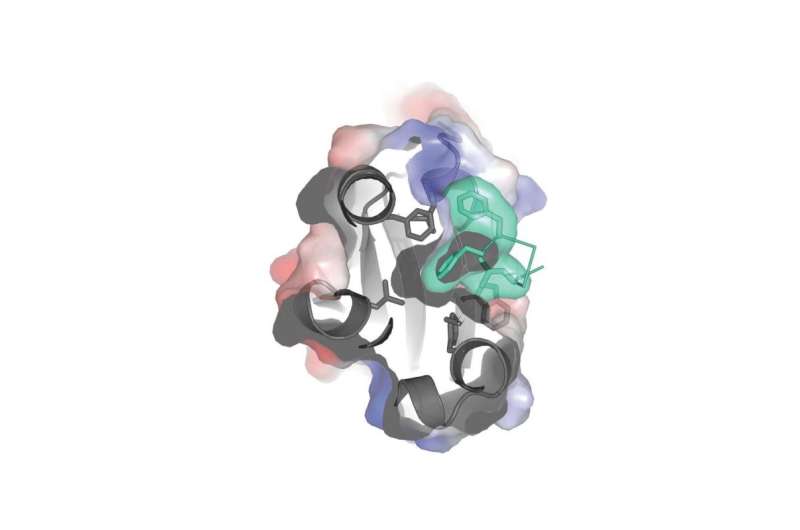Potential new therapeutic target for hypertension may offer less side effects

A team of Vermont investigators has been issued a patent for their discovery of a molecule that rescues damaged blood vessels, yet preserves healthy vessels and could serve as a springboard for a new pharmaceutical therapy with fewer side effects for hypertension - a major risk factor for cardiovascular and kidney disease that effects roughly one in three people in the U.S.
The group's findings, which were published recently in the journal Chemistry & Biology, yielded an important discovery for which they were issued a U.S. patent on February 16, 2016.
Senior author Wolfgang Dostmann, Ph.D., a professor of pharmacology at the University of Vermont College of Medicine, and his team specialize in research on the contraction function of muscle cells in blood vessels. He says their recent discovery wasn't planned. While studying the atomic structure of the major target for the enzyme cGMP - called protein kinase 1alpha (PKG 1α) - he and colleagues, including first author and co-patent holder Thomas Moon, Ph.D., landed on the serendipitous finding.
"Solving this structure improved our understanding of how this enzyme is turned on and off," says Dostmann, whom with his team hypothesized that the enzyme could be regulated not only by its natural activator - the molecule cGMP - but also by a series of carefully designed synthetic peptides. They were able to synthesize and confirm the ability of a set of unique activators - short synthetic peptides called "S-tides" - to modulate PKG activity. These S-tides demonstrate a range of efficacy and are highly specific for the PKG 1α subtype critical for arterial relaxation and blood pressure regulation. The researchers determined that when applied directly to arteries harvested from animal models, S-tides activated critical biological signaling components related to PKG 1α activation, which in turn, led to a prevention of the pressure-induced constriction of the vessels that causes high blood pressure.
"Drugs like nitroglycerine, Viagra - which was originally for blood pressure - and Adempas, a treatment for pulmonary hypertension, all act on this signaling pathway," says Dostmann, who adds that all of these drugs are designed to keep intracellular cGMP molecules at an elevated level. S-tides in contrast, do not change the endogenous levels of cGMP.
The team's discovery offers "a first step for creating a platform from which pharmaceutical therapies can be designed," says Dostmann, who adds that the group's development of first-in-class PKG-targeted therapies could lead to treatments for more diseases than just high blood pressure. For example, he says, the type 1α cGMP-dependent PKG has been shown to be relevant in cancer, obesity, chronic obstructive pulmonary disorder (COPD) and all forms of cardiovascular disease, and the signaling pathway involved in this mechanism has historically been a target for drug development.
Joseph Brayden, Ph.D., a UVM professor of pharmacology and expert in physiological functional relevance, helped the group understand how these biological and chemical activities applied to regulation of cardiovascular tissues, specifically in terms of the conductance of certain ion channels and the contractile behavior of muscle cells located in the arterial wall.
In fact, says Dostmann, that exploration is where the group uncovered a really "cool" surprise: they learned that only small arterial vessels were affected by these molecules if the tissue lining the blood side was damaged, which is called arterial dysfunction. Atherosclerosis, a condition that develops as people age and causes plaques to build up in the arteries, is a more common example of arterial dysfunction.
"The peptides rescue the damaged vessels, but they have no effect on the healthy vessels," says Dostmann, who says the team is currently generating peptide libraries for further study and intends to collaborate with medicinal and computational chemists to screen compound libraries to gain leads on how to develop more potent activators.
"This therapeutic pathway has huge potential for the average person, since about 30 percent of people develop hypertension or cardiovascular disease in their lifetime," Dostmann says.
More information: Thomas M. Moon et al. Synthetic Peptides as cGMP-Independent Activators of cGMP-Dependent Protein Kinase Iα, Chemistry & Biology (2015). DOI: 10.1016/j.chembiol.2015.11.005




















